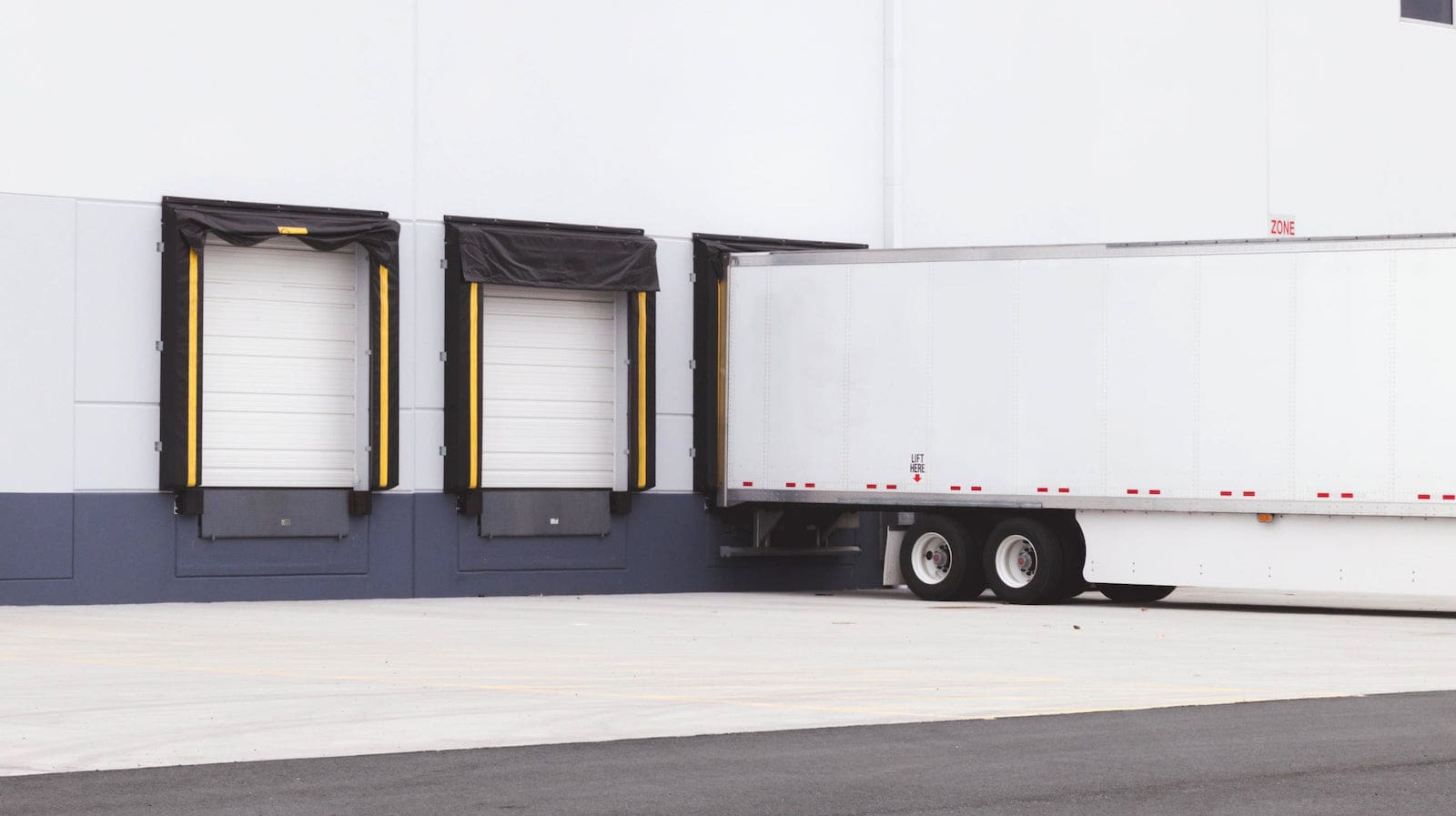Table of Contents
** Minutes
What is Amazon Inventory Placement Service?
How does Amazon Inventory Placement Service work?
Inventory Placement Service vs. Distributed Inventory Placement
Is Amazon Inventory Placement Service right for you?
Pros and cons of Amazon Inventory Placement Service
Why ShipBob is a good alternative to Amazon Inventory Placement Service
When you become an ecommerce seller, you quickly discover that there are many questions that you never thought about, but still must answer. For instance: What is the most efficient way to ship your inventory to a warehouse or fulfilment centre?
For Amazon sellers leveraging the Fulfilment by Amazon (FBA) service, the default method of distributing and shipping inventory requires the merchant to ship portions of their inventory to different fulfilment centres so that it’s spread out across different regions.
For some merchants, this can be expensive and time-consuming. Fortunately there is an alternative: Amazon’s Inventory Placement Service.
In this article, we’ll cover what Amazon’s Inventory Placement Service is, how it works, its pros and cons, and how ShipBob can provide ecommerce merchants with an alternative to the Inventory Placement Service.
What is Amazon Inventory Placement Service?
The Inventory Placement Service is an inventory distribution service available to Amazon FBA sellers. It allows Amazon sellers to send their inventory to a single Amazon receiving or fulfilment centre, instead of having to send split shipments separately to multiple Amazon fulfilment centres in different locations.
How does Amazon Inventory Placement Service work?
When you use Amazon’s FBA service, your seller central account’s default setting — the Distributed Inventory Placement option — dictates that you divide your inventory into multiple portions, and ship these portions to multiple different fulfilment centres.
The idea behind this default is to distribute your inventory across different regions, so that your orders are shipped out from the fulfilment centre nearest to their destinations, which allows your customers to receive their orders faster.
However, this default can sometimes force a merchant to ship inventory to Amazon facilities that are extremely far away, which greatly increases their inventory shipping costs.
The Amazon Inventory Placement Service is an opt-in service, and an alternative to the Distributed Inventory Placement default.
With FBA Inventory Placement Service, you send your entire inventory to a single Amazon location, which may be a receiving centre or a fulfilment centre. From there, Amazon will strategically divide and distribute your inventory between different fulfilment centres for you.
This lets you enjoy the benefits of distributed inventory, without having to distribute it across various locations yourself.
However, this option is not free. Amazon will charge you a per-unit fee based on each SKU’s weight when you opt into this service through your seller account.
Every merchant will have to calculate whether or not Amazon’s Inventory Placement Service is cost-effective for their unique business.
As long as the cost savings you reap from shipping to a single location (rather than multiple locations) offset the extra fees, using the Inventory Placement Service is a good idea — but only you could determine that for your business.
“Most other companies like Amazon are structured in such a way that you don’t have flexibility — you’re just a small part of their business, so there’s no patience for you. The amazing thing about ShipBob has not just been its flexibility and ability to customise, but also the support it’s given us whenever we’ve faced problems. Having support through ShipBob has really allowed us to capture growth well.”
Aaron Patterson, COO of The Adventure Challenge
Inventory Placement Service vs. Distributed Inventory Placement
Amazon’s Inventory Placement Service may be a great choice for some businesses, but not for others.
To help you determine whether your business should use the Distributed Inventory Placement default or the Inventory Placement Service, here is a breakdown of the key differences between the two.
Shipping
Using the Inventory Placement Service, a seller ships all of their inventory to a single Amazon receiving or fulfilment centre. Under the Distributed Inventory Placement Program, Amazon requires that you split your inventory between different fulfilment centres.
Distribution
Amazon’s Inventory Placement Service takes care of distribution for merchants; once your inventory reaches the designated receiving centre or fulfilment centre, Amazon’s team divides it and ships units to other fulfilment centres.
In the Distributed Inventory Placement Program, the seller is solely responsible for dividing up their inventory and shipping it to multiple fulfilment centres.
In both cases, Amazon picks the location or locations to which a merchant will send their inventory. Under the Inventory Placement Service, Amazon chooses both the initial receiving or fulfilment centre, as well as the subsequent ones.
Fees
When you use the Inventory Placement Service, Amazon charges a per-item fee based on each item’s weight and size. If your business sells heavy or bulky items, these add-on costs can easily add up.
Amazon doesn’t charge an extra fee to use the default Distributed Inventory Placement Program. However, the cost of shipping inventory to multiple locations can add up as well.
“I really like that the pricing structure was simple and there were not any additional add-on charges. I didn’t really have any alternatives I was considering, because ShipBob was the easy choice.”
Matt Dryfhout, President & Founder of BAKblade
Exceptions
Even when using Amazon’s Inventory Placement Service, certain items may still need to go to a different receiving centre or fulfilment centre. This includes apparel, jewelry, shoes, media, oversized items, and hazardous materials.
Inventory tracked with a manufacturer barcode and items that require Amazon prep or Amazon labelling will also need to go to a different location.
Under the Distributed Inventory Placement Program, your entire inventory gets assigned to different fulfilment centres from the start. There are no exceptions, since each type of inventory is automatically assigned to the appropriate fulfilment centre.
Is Amazon Inventory Placement Service right for you?
It’s much more convenient to send inventory to just one location, so using Amazon’s Inventory Placement Service initially seems like a no-brainer.
However, it’s not a one size fits all solution — in fact, depending on a business’s SKU types and inventory volume, the costs of using the Inventory Placement Service could easily outweigh the benefits.
Amazon’s Inventory Placement Service is usually only a good fit for inventories meets the following criteria:
Smaller shipments and inventory volumes
Because Amazon’s Inventory Placement Service charges a per-item fee, the service makes the most sense for sellers who deal with smaller inventory volumes (and subsequently smaller inventory shipments).
In these cases, the merchant saves money by avoiding the expensive shipping costs associated with distributing inventory themselves — and with fewer items to ship, their inventory placement service fee is manageable, and isn’t so high that it offsets their distribution cost-savings.
Small-sized, lightweight goods
Amazon’s Inventory Placement Service’s fee is based on the weight and size of each item, with oversized items costing more. As a result, businesses that sell small, light goods that are easy to ship will incur the least fees.
Products with a high profit margin
While avoiding the expense of distributing your own inventory may save you money, it may not save you very much. In these cases, businesses should consider the Inventory Placement Service for products that have high profit margins, rather than products with low ones.
Products with a high profit margin provide merchants with a way to absorb some of the Inventory Placement Service fee.
For example, if you earn $1.00 of profit for a product you sell (including shipping savings), and Amazon’s Inventory Placement Service charges a $0.30 fee for each item, you will still earn $0.70 of profit per sale.
However, if you only get a $0.15 profit margin on a product, and that same $0.30 fee applies, that fee will eat into your profit margin.
Pros and cons of Amazon Inventory Placement Service
Before you commit to the Amazon Inventory Placement Service, it’s important to understand both its upsides and downsides. To help you assess whether this option makes sense for your business, here are some of the major pros and cons to Amazon’s Inventory Placement Service.
Pro: Amazon handles the distribution
Once your inventory shipment reaches the assigned Amazon receiving centre or fulfilment centre, you can leave the rest to Amazon.
Amazon will take care of the entire process of splitting up your inventory and then reshipping it to different fulfilment or distribution centres, saving you time and stress.
Orders will still get shipped out from the fulfilment centre closest to the delivery destination, which speeds up shipping and lowers shipping costs for you. Altogether, these financial and time savings can be a boon — especially for businesses with limited resources and a smaller workforce.
Pro: Just one shipping address
With Amazon Inventory Placement Service, you only need to send your inventory to one shipping address. Amazon will assign you a receiving centre or fulfilment centre to which you must send your inventory, based on factors such as the type of product and the location from which you are shipping.
Unless you sell products that qualify as exceptions, you’ll no longer have to ship your inventory to fulfilment centres in more distant locations. This can help you majorly reduce shipping costs — as your shipments will typically have to travel shorter distances and cross fewer shipping zones — and eliminate complexity from your supply chain.
Pro: Good for smaller shipments
Amazon Inventory Placement Service may be a good option if you only have to send a few boxes of inventory. This eliminates the need to split up a small amount of inventory into multiple FBA shipments, which is not only complicated but tends to get expensive.
Con: It can be expensive
Depending on a SKU’s weight and how many you have to ship, Amazon’s Inventory Placement Service can be the more expensive option for some sellers.
For standard-size products weighing less than 2 lbs, you only have to pay about $0.30 to $0.40 per item. However, oversize items will cost a minimum of $1.30, with items weighing over 5 lbs costing even more.
As such, the cost to use the service can easily add up for oversize and heavy items, as well as for large volumes of inventory. While one seller can save some money by leveraging the service for 200 units of inventory, another seller may end up spending more because they have 2,000 units to ship.
Con: It is limited to certain items
Even if you use Inventory Placement Service, Amazon has exceptions for certain categories of inventory. This means that although you’ll be sending most standard-size items to a single Amazon location, the following items will still get routed to a different receiving centre or fulfilment centre:
- Apparel
- Jewelry
- Shoes
- Media
- Oversize items
- Hazardous materials
- Inventory tracked with a manufacturer barcode
- Items requiring Amazon prep
- Items requiring Amazon labelling
This is usually because the item needs to be handled or stored under specific conditions, and only certain receiving centres and fulfilment centres are equipped for this.
Not only can these exceptions cause inconveniences and confusion, they can also reduce the cost savings you see through the Inventory Placement Service.
Con: Longer lead times
Since Amazon has to reship your inventory to other fulfilment centres once it reaches the first transit hub, the entire process takes longer than shipping the inventory directly to the final fulfilment centres.
Items must travel for longer durations before they become available to buy, which may cause your products to be presented to Amazon customers with a future ship date.
Since there are longer delivery times associated with Inventory Placement Service, it is crucial to arrange for inventory replenishment well ahead of time so as to avoid stockouts and prevent missing sales opportunities.
“For us, changing from a 3 week lead time to 3 days through ShipBob is what drove our sales. Even now, one of the primary reviews we get on Etsy is, ‘My order arrived really quickly!’ Having the stock locally in the US means that lead times and shipping times are minimal, and that you’ll get higher conversion rates because you’re offering better lead times.”
John Greenhalgh, Co-Founder of A Year of Dates
Why ShipBob is a good alternative to Amazon Inventory Placement Service
If you’re looking to enjoy the benefits of Amazon’s Inventory Placement Service, but it’s not the best fit for your business, ShipBob offers you an alternative.
ShipBob’s fulfilment network enables merchants selling through Amazon to save money and time through distributed inventory, while also providing the convenience and simplicity you want in a fulfilment solution.
With our omnichannel fulfilment solution, you can seamlessly deliver orders coming from multiple sales channels — including Amazon and your ecommerce store. ShipBob’s software directly integrates with your store, which means that your FBM orders are automatically received in our fulfilment centres where they can be prepped for fulfilment.
For your Fulfilment by Amazon orders, ShipBob will prepare the orders with FBA item and box labels, acting as your central logistics hub. From there, you can easily transfer inventory from any ShipBob fulfilment centre to any FBA facility to meet Amazon’s requirements.
The best part? ShipBob also lets you choose which fulfilment centres you store your inventory in. Our Ideal Inventory Distribution Tool helps you to select locations based on previous order data, so that you only send inventory to the most strategic locations for inventory optimisation.
To learn more about how ShipBob can help your business distribute inventory, reduce costs, and save time, click below to request a fulfilment quote.
Inventory placement FAQs
Below are answers to common questions about inventory placement.
What are the disadvantages of inventory placement?
The cost of Amazon Inventory Placement Service can easily add up if you have to ship heavy items, large volumes of inventory, or certain types of items that quality as exceptions.
How do I get an estimate for inventory placement?
You can generate an estimate for Amazon Inventory Placement Service using the Fee Preview Report.
What are the benefits of inventory placement service?
The simplicity of sending your inventory to just one location and having Amazon handle your inventory distribution are the biggest benefits of Amazon Inventory Placement Service.



